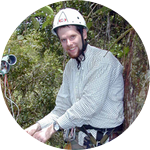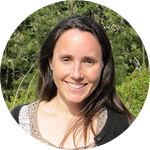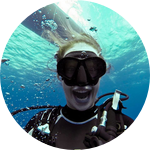About This Project
The ongoing international effort to protect the Sargasso Sea ecosystem in the NW Atlantic is hampered by limited scientific research on Sargassum - the floating algae common to the North Atlantic gyre. This project aims to provide the first simultaneous examination of Sargassum macrofauna diversity across multiple regions, in order to better understand the impacts of oceanographic variables on Sargassum distribution and to contribute to the international effort to protect the Sargasso Sea.
Ask the Scientists
Join The DiscussionWhat is the context of this research?
There are many species of the genus Sargassum distributed in tropical and subtropical waters but only two, S. natans and S. fluitans, have an entirely pelagic life cycle, meaning free-floating in the open ocean, and offer an ecologically-supportive structure in otherwise nutrient-poor environments. Drifting Sargassum is moved through the oceans by surface currents and winds on an annual cycle that begins in the Gulf of Mexico during spring and ends in the southern Sargasso Sea during the following winter. Individual clumps host several cryptically colored, endemic and non-endemic mobile fauna. While scientists have been studying this unique drifting habitat within these three regions for decades, very few comparisons have been made between Sargassum species or regions.
What is the significance of this project?
Sargassum represents a keystone species supporting relatively high levels of biodiversity. For many endangered species of sea turtles, Sargassum represents a vital habitat during their juvenile life stage termed the "lost years." The preservation of high biodiversity is required for the maintenance of the health and resilience of this unique ecosystem currently facing many of anthropogenic pressures. For as yet unknown reasons, a massive bloom representing a nearly two hundred-fold increase from an eight year total biomass average was observed in 2011 ranging from Trinidad across the Atlantic as far as Ghana. Movement of Sargassum between the Gulf, Sargasso Sea, and Caribbean ensures that any event will negatively impact all three regions and beyond.
What are the goals of the project?
Samples will be collected during the spring/summer of 2015 from the Sargasso Sea, Caribbean, and Gulf. Individual clumps and macrofauna will be dip-netted. Video surveys will be conducted to look for the presence/absence of predators. Mobile fauna will be stored for preservation and later analysis, and macrofauna will be identified to the lowest taxon. Sargassum clumps will be weighed and photographed to determine approximate area. The analysis will examine differences in species richness, evenness, and diversity between stations and between regions. The impact of Sargassum species and sub-species differences as well as clump age, size, and condition on community diversity will also be assessed.
Budget
Sampling Equipment – This portion of the funding will be used to purchase supplies necessary for the collection and preservation of Sargassum samples which include specimen jars, 80% ethanol, a dip net, spring scale, buckets, and other miscellaneous equipment.
Video Equipment – Footage of activity below Sargassum mats will allow researchers to get a better look at the complete in-situ habitat as well as determine the presence/absence of any predators that will not be collected in dip-net samples.
Travel Expenses – Travel to and from College Station, TX to the Texas and Lousiana coasts for cruises is necessary for collection of samples.
Flight to Woods Hole, MA - Samples collected in the Caribbean and Sargasso Sea will be brought to SEA's campus in Woods Hole, MA.
Endorsed by
Meet the Team
Team Bio
When I was younger, all I wanted was to be a mermaid; as I learned a bit more about viable career options, Marine Biology seemed to be the closest choice. Since then I have striven to fill my life with spectacular field experiences from observing whales in the Galapagos, tagging 4 meter long Tiger sharks in the Bahamas, performing behavioral research with beluga whales at Mystic Aquarium, learning aquarist techniques at the Georgia Aquarium, and sailing tall ships through the Channel Islands (CA) and Sargasso Sea.
My research interests focus on an interdisciplinary approach to marine ecology. I am excited to work with Sargassum because it represents a ecological structure as supportive as a kelp forest and yet so little is known about it or those animals that rely on it.
Outside of my research, I enjoy freediving and SCUBA, photography, painting, and dance.
Lindsay Martin
When I was younger, all I wanted was to be a mermaid; as I learned a bit more about viable career options, Marine Biology seemed to be the closest choice. Since then I have striven to fill my life with spectacular field experiences from observing whales in the Galapagos, tagging 4 meter long Tiger sharks in the Bahamas, performing behavioral research with beluga whales at Mystic Aquarium, learning aquarist techniques at the Georgia Aquarium, and sailing tall ships through the Channel Islands (CA) and Sargasso Sea.
My research interests focus on an interdisciplinary approach to marine ecology. Outside of my research, I enjoy freediving and SCUBA, photography, painting, and dance.
Project Backers
- 41Backers
- 112%Funded
- $2,250Total Donations
- $54.88Average Donation


